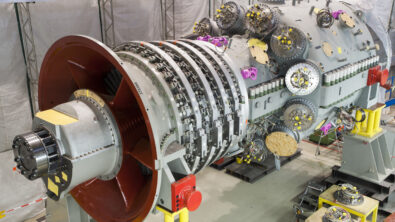3D Printing antiquity in Cleveland

3D printing is everywhere, maybe not at volume yet, but everywhere. Beyond the more technology focused applications for industrial use cases in aircraft, vehicles, or manufacturing. Outside the realm of medicine to create custom joints and limbs for patients. And building on the creativity of makers, artists, and general enthusiasts, the manufacturing tech is bleeding into a field I had never even thought might benefit – archaeology. Watching the most recent update on a project from the Cleveland Museum of Art, I could only think “Wow! This is a perfect application for 3D printing!” By combining 3D scanning with printing, they were able to non-invasively recreate the statue of Krishna from antiquity and fit pieces back together without threat of further damaging the stone.
While I just learned about this amazing project recently it has been years in the making and 3D printing has been a part of the renewed effort by the museum to complete the statue since the beginning. After creating scans and prints of the statue at the Cleveland Museum, researchers were able to more easily articulate the stone into the correct form. The first attempt to do so in the 1970s lacked access to these precision technologies and were left to articulate the pieces with their full weight. Researcher’s new strategy of modeling first, articulating later also presented an opportunity to complete the statue, which until recently had been missing the crowning feature. The hand raised above Krishna’s head to hold up the world had been separated from the other fragments collected and eventually assembled by the Cleveland Museum.
Presenting the new, more accurate articulations along with petrological analysis to the National Museum of Cambodia, the team was able to coordinate the reunion of body and hand. To understand the achievement and see the artwork’s glory the PBS News Hour has a great video report on the project. Or check out the Cleveland Museum of Art to see more on the greater project of restoring the statue. But what does 3D printing and non-destructive archaeology hold for the future of historical analysis? It’s hard to say as a casual observer, but there are a number of applications that may prove useful in understanding a greater content to historical objects. Shipwrecks often conjure fascinations with what took place so long ago, and with similar technologies one could reassemble parts scattered across the sea floor. Combining the 3D scans in a virtual space could uncover even more information aided by simulation to understand the ocean currents to find more pieces or what may have caused the wreck in the first place.
Regardless of what these applications learn from the past, it is only possible because of the uniqueness of the 3D printing process. Models can be manufactured rapidly to start working with the forms right away. Compare this to working the material by hand again for a duplicate, requiring highly skilled artisans. And some projects may even be impossible to recreate by eye, instead requiring an exact copy. Traditionally this would have required a molding and casting process, accurate but time-consuming, it also has the possibility of degrading the original object whether chemically or mechanically. This would be a major problem in removing wood or other similarly preserved organic materials from the ocean. Exposure to air can wreak havoc on these materials and minimal disturbance ruin the artifact.
I am very excited to see where 3D printing is applied next, and I expect the mind-blowing ideas to only accelerate as it grows in ubiquity around the world and across every field of study. The statue of Krishna was just a poetic example of my excitement, using a modern technology to solve a vintage problem involving an ancient relic. It is refreshing to take a step outside the world of industry every once in a while, to see how the wider world is using such an innovative technology. Let me know if you know of any amazing project utilizing 3D printing or additive manufacturing to solve a problem or explain a fascinating idea.
Siemens Digital Industries Software is driving transformation to enable a digital enterprise where engineering, manufacturing and electronics design meet tomorrow. Xcelerator, the comprehensive and integrated portfolio of software and services from Siemens Digital Industries Software, helps companies of all sizes create and leverage a comprehensive digital twin that provides organizations with new insights, opportunities and levels of automation to drive innovation.
For more information on Siemens Digital Industries Software products and services, visit siemens.com/software or follow us on LinkedIn, Twitter, Facebook and Instagram.
Siemens Digital Industries Software – Where today meets tomorrow


